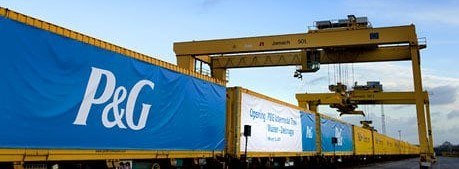P&G China: Reinventing the Offline B2B Distribution Network

In the midst of China’s massive digital transformation, how does P&G reinvent its 20-year-old offline B2B distribution network to sell P&G products into almost 7 million independent mom-and-pop stores across China?
First entering China in 1988, P&G saw two decades of exponential growth in this rapidly evolving consumer market, with China becoming P&G’s 2nd largest market after the U.S. and contributing 8% of its global revenue [1]. In its 3rd decade, however, P&G China has been posting disappointing sales figures and losing market share in most categories, which P&G’s CEO, David Taylor, considers “unacceptable” [2].
While P&G established a small online presence in China, its strength and focus have largely been offline distribution. Despite being one of the most mature ecommerce markets in the world, China still has an online retail penetration rate of only 13.5% [3]. Offline will remain the bread and butter for P&G and other large CPG companies. How does P&G defend its market position offline in the digital era by taking advantage of the latest information and data technologies?
The Offline Challenge in China and P&G’s 20-year-old Solution
Historically, P&G owed a large part of its success in China to the offline B2B distribution network it built over 20 years. Unlike online retail, offline retail in China is inefficient and fragmented. There are 6.8 million independent mom-and-pop stores [4] spread across China. P&G’s B2B distribution network consists of thousands of distributors, wholesalers and channel vendors, which, in its heyday, was capable of supplying P&G products to 1.2 million such stores.
Despite its scale, the 20-year-old network has obvious drawbacks. By design, it only allows one-way information flow – P&G fills the distribution network with whatever products are in demand, but never receives any data from the shops and consumers. The network is further handicapped by rising operating costs in China, and has shrunk significantly.
The LST Program – Digitizing the Brick Mortar B2B Distribution Network
Starting from 2015, P&G pursued a digitization strategy to reinvent its offline B2B distribution network. P&G joined forces with Alibaba and became a launching customer for Alibaba’s “Lingshoutong (LST)” program [5]. The LST program enlists mom-and-pop stores to become “LST stores.” LST store owners can order some or all of their assortments through the LST mobile app at wholesale price. Alibaba consolidates the demand, sources the products directly from brand partners such as P&G or their designated distributors, and ships the products to the stores through Cainiao Logistics, an Alibaba affiliate that links a network of logistics providers, warehouses and distribution centers [6]. In the past, many store owners had to drive hundreds of miles every other week to source products from different physical wholesale marketplaces, which are typically characterized by limited selection, high costs and low quality (even expired or fake products in some cases).

A store in Hangzhou before and after joining LST [7]
The LST program further helps store owners by providing customized assortment and placement recommendations based on Alibaba’s consumer data. For example, it can suggest a store owner to stock dog food because there are 100 dog owners living within walking distance of the store [8]. The LST program also provides stores with connected smart POS systems (for data collection), Alipay terminals (for accepting e-payments), store improvement plans, service standards, etc.
The benefits for P&G are enormous:
– The cost of using the LST network is significantly lower than maintaining a proprietary distribution network due to the use of technology and economy of scale.
– P&G can push its new products to stores more quickly and control what to promote to certain regions or customers.
– P&G can collect real time data on store orders and consumer purchases.
Bigger Concerns Looming on the Horizon
While LST addresses many of P&G’s near-term challenges, P&G still faces one fundamental issue.
Distribution had been one of the P&G’s core competencies in China. Going forward, however, if a large portion of P&G’s distribution network is controlled by platforms like Alibaba, how does P&G remain competitive as a company? In the same way LST can sell P&G products to LST stores, it can also promote competing products from Unilever. Even worse, will there be a day when LST starts selling private label products and disintermediates P&G completely?
 The spicy Snickers chocolate bar developed by Mars in partnership with Tmall [9]
The spicy Snickers chocolate bar developed by Mars in partnership with Tmall [9]
For P&G to stay competitive and valuable as a company, my recommendation is that it should focus on reinforcing its strengths in R&D, production and brand building. As a benefit of digitization, P&G now has access to an enormous amount of data which creates a great opportunity to develop a nimbler R&D and production process that can respond to changing consumer demand quickly and cost effectively. As an example, Mars conducted a pilot product development program in partnership with the ecommerce platform Tmall, which shortened the product development cycle from 18 to 9 months through an iterative process driven by quick consumer feedback and big data [10].
What will Keep P&G Awake at Night
No large CPG companies has made the transition successfully. Is it possible to create a CPG business model without an edge in distribution network? The answer remains to be seen.
[Word Count: 800]
Reference:
- Proctor & Gamble, 2017 Annual Report, p. 2, http://www.pginvestor.com/Cache/1001226614.PDF?O=PDF&T=&Y=&D=&FID=1001226614&iid=4004124, accessed Nov. 2017.
- Sharon Terlep, “P&G CEO Says Company Hasn’t Been Delivering,“ Wall Street Journal, Feb. 18, 2016, https://www.wsj.com/articles/p-g-ceo-says-performance-in-china-unacceptable-1455809323, accessed Nov. 2017.
- Deloitte, “China E-Retail Market Report 2016,” https://www2.deloitte.com/content/dam/Deloitte/cn/Documents/cip/deloitte-cn-cip-china-online-retail-market-report-en-170123.pdf, accessed Nov. 2017.
- Kanter Retail, 2016 China FMCG Internet B2B Market Research, p. 12, https://cn.kantar.com/media/1476077/kantar_retail_2016_________b2b_________.pdf, accessed Nov. 2017.
- “Alibaba 1688.com Launches LST Program. P&G Joins Quietly,” May 9, 2015, Ebrun.com, http://www.ebrun.com/20150309/126685.shtml, accessed Nov. 2017.
- Di Lin, “LST Covers over 500,000 Stores. Alibaba will Help Over 6 Million Stores Embrace the DT Era,” Huanqiu Tech, Aug 28, 2017, http://tech.huanqiu.com/original/2017-08/11190231.html, accessed Nov. 2017.
- “A Visit to the First Tmall Xiaodian: The Revolution at the Wei Jun Supermarket,” Linkshop, Aug 30, 2017, http://www.linkshop.com.cn/web/archives/2017/386067.shtml, accessed Nov. 2017.
- Jihui Shen, “First Tmall Store Opens in Hangzhou. The Mom-and-pop Store in Your Neighborhood will Understand You Better,” Finance China, Aug. 30, 2017, http://finance.china.com.cn/industry/20170830/4372548.shtml, accessed Nov. 2017.
- “Spicy Chocolate Debuts on Tmall. Do You Dare to Try?” Huanqiu Tech, Aug 18, 2017, http://tech.huanqiu.com/internet/2017-08/11147493.html, accessed Nov. 2017.
- Xiaoming Lu, “Tmall Strives to Become 5th Ave of New York by Helping Mars to Develop Spicy Chocolate and Helping Estee Lauder to Develop New Eye Cream,” Aug. 16, 2017, 36Kr, https://36kr.com/p/5088268.html, accessed Nov. 2017.



Thanks for the insightful piece!
Yet again, we see the infiltration of Alibaba’s vast platform into just about every aspect of Chinese life, including the distribution of daily consumer products. While I agree that the LST program enables P&G to more efficiently manage its supply chain and distribution in a highly fragmented offline retail market, I imagine that the continued urbanization of China will lead to further consolidation of retail outlets and the concentration of selling power in select large players (think the mega-supermarkets like Carrefour / Tesco and local convenience chains like FamilyMart / Lawsons). With small, informal mom & pop shops in an ostensible decline, how should P&G think about partnering with these large players to harness he power of a digital, data-driven supply chain? For example, is signing exclusivity contracts with large retailers and convenience store chains to carry P&G-only goods an option worth exploring? How should P&G ensure a two-way information flow of customer purchasing and behavior data with these large partners, outside of the Alibaba LST program?